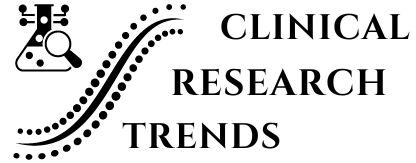The Role of Data Analytics in Clinical Research
Clinical research forms the backbone of advancements in healthcare and medicine, providing essential insights into the safety and efficacy of new treatments, drugs, and medical devices. Traditionally, clinical research has relied heavily on manual data collection and analysis methods, which are often time-consuming and prone to errors. However, the advent of data analytics has revolutionized this field, offering new tools and methodologies that enable more accurate and efficient data interpretation.
Data analytics encompasses a wide range of techniques and technologies used to process and analyze large datasets, extracting meaningful patterns and insights. In clinical research, these tools are invaluable for handling complex datasets that include patient information, treatment outcomes, genetic data, and more. The integration of data analytics into clinical research not only enhances the quality and speed of research processes but also opens up new possibilities for personalized medicine, predictive analytics, and real-world evidence generation.
The importance of data analytics in modern clinical research cannot be overstated. It facilitates better decision-making, improves patient outcomes, and streamlines the research process from start to finish. As the volume and complexity of data in healthcare continue to grow, the role of data analytics becomes increasingly critical in navigating this landscape effectively.
The Evolution of Clinical Research with Data Analytics
In the past, clinical research primarily relied on manual data collection methods, such as paper-based records and manual entry into databases. This approach was not only labor-intensive but also susceptible to human error, leading to potential inaccuracies in the data collected. Moreover, traditional data analysis methods often involved basic statistical techniques that could not fully capture the complexity of clinical data, limiting the insights that could be drawn.
The shift towards digital data and analytics in clinical research began with the adoption of electronic health records (EHRs) and other digital data sources. This transition marked the beginning of a new era where vast amounts of data could be collected, stored, and analyzed with greater precision. Key advancements such as big data, machine learning, and artificial intelligence have further propelled this transformation, providing powerful tools for handling and interpreting large datasets.
Big data refers to the massive volumes of data generated from various sources, including clinical trials, patient records, genetic data, and more. This data can be structured or unstructured, and its sheer volume requires advanced tools for processing and analysis. Machine learning, a subset of artificial intelligence, involves algorithms that can learn from data and improve over time without explicit programming. In clinical research, machine learning can be used for tasks such as predicting patient outcomes, identifying potential side effects, and optimizing trial designs.
The integration of these technologies into clinical research processes has enabled researchers to conduct more comprehensive analyses, uncovering patterns and insights that were previously hidden. This evolution has transformed clinical research into a more data-driven discipline, where decisions are increasingly based on robust data analysis rather than intuition or limited data samples.
Key Benefits of Data Analytics in Clinical Research
A. Enhanced Data Quality and Accuracy
One of the primary benefits of data analytics in clinical research is the enhancement of data quality and accuracy. Traditional data collection methods are prone to human error, such as incorrect data entry or misinterpretation of data. These errors can compromise the integrity of the research findings and lead to incorrect conclusions. Data analytics tools, on the other hand, automate many aspects of data processing, reducing the likelihood of errors and ensuring that the data collected is accurate and consistent.
Improved data integrity is crucial in clinical research, where accurate data is essential for evaluating the safety and efficacy of new treatments. Data analytics tools can also help in identifying and correcting anomalies in the data, further enhancing the reliability of the research findings.
B. Faster and More Efficient Data Analysis
Another significant advantage of data analytics is the speed and efficiency with which data can be analyzed. Traditional data analysis methods often involve manual processes that can be time-consuming and labor-intensive. In contrast, data analytics tools can process large datasets in a fraction of the time, allowing researchers to generate insights and make decisions more quickly.
Automation of data processing also enables real-time data analysis and reporting, which is particularly valuable in clinical trials where timely decision-making can be critical. For example, real-time analysis can help in monitoring patient safety, identifying adverse events early, and making necessary adjustments to the trial protocol. This not only improves the overall efficiency of the research process but also enhances patient safety and ethical standards.
C. Better Patient Selection and Recruitment
Data analytics also plays a crucial role in improving patient selection and recruitment for clinical trials. One of the challenges in clinical research is identifying and recruiting patients who meet the specific criteria for a study. Traditionally, this process has been manual and time-consuming, often leading to delays in the start of trials.
With data analytics, researchers can use data mining techniques to analyze large datasets and identify potential candidates who meet the study criteria. This not only speeds up the recruitment process but also ensures that the selected patients are well-suited for the study, thereby improving the quality of the research. Additionally, data analytics can support personalized medicine by enabling the selection of patients who are more likely to benefit from a specific treatment based on their genetic profile, medical history, and other factors.
D. Improved Study Design and Monitoring
Data analytics can significantly enhance the design and monitoring of clinical studies. Adaptive trial designs, which allow for modifications to the trial protocol based on interim data analysis, are becoming increasingly popular. These designs can improve the efficiency and ethical standards of clinical trials by allowing researchers to make data-driven decisions during the course of the study.
Continuous monitoring is another area where data analytics provides significant benefits. By analyzing data in real-time, researchers can quickly identify and address issues that may arise during the trial, such as unexpected adverse events or protocol deviations. This proactive approach helps ensure the safety of participants and the integrity of the study, ultimately leading to more reliable and valid results.
Applications of Data Analytics in Clinical Research
A. Predictive Analytics
Predictive analytics is one of the most powerful applications of data analytics in clinical research. It involves using historical data to make predictions about future outcomes. In clinical research, predictive analytics can be used to forecast patient outcomes, identify potential side effects, and predict the success of a clinical trial.
For example, predictive models can analyze patient data to identify individuals who are at higher risk of developing certain conditions, allowing for earlier intervention and better management of the disease. Similarly, predictive analytics can help in identifying patients who are more likely to respond positively to a particular treatment, enabling personalized treatment plans that improve patient outcomes.
B. Risk Management
Risk management is a critical component of clinical research, as it involves identifying, assessing, and mitigating potential risks associated with a study. Data analytics plays a vital role in this process by providing tools and techniques for analyzing data and identifying potential risks.
For instance, data analytics can be used to identify patterns and trends in adverse events reported during a clinical trial. By analyzing this data, researchers can identify potential safety concerns and take appropriate action to mitigate the risks. Additionally, data analytics can support proactive risk management strategies, such as monitoring for early warning signs of adverse events and implementing preventive measures to reduce the likelihood of these events occurring.
C. Real-World Evidence and Post-Market Surveillance
Real-world evidence (RWE) refers to data collected outside of the traditional clinical trial setting, often from sources such as electronic health records, insurance claims, and patient registries. RWE is increasingly being used in clinical research to provide additional insights into the safety and efficacy of treatments in real-world settings.
Data analytics is essential for analyzing RWE, as it allows researchers to process and interpret large volumes of data from diverse sources. This analysis can provide valuable information on the long-term safety and efficacy of treatments, as well as their impact on different patient populations. Post-market surveillance, which involves monitoring the safety of treatments after they have been approved and are on the market, is another critical application of data analytics. By analyzing data from various sources, researchers can identify potential safety concerns and take appropriate action to protect patients.
Challenges and Considerations
A. Data Privacy and Security
One of the primary challenges in using data analytics in clinical research is ensuring data privacy and security. Patient data is highly sensitive and must be protected to comply with regulations such as the General Data Protection Regulation (GDPR) and the Health Insurance Portability and Accountability Act (HIPAA). Researchers must implement robust data security measures to protect patient data from unauthorized access and breaches.
Additionally, ethical considerations must be taken into account when handling patient data. Researchers must ensure that patients provide informed consent for the use of their data in research and that their privacy is respected throughout the research process.
B. Data Integration and Standardization
Data integration and standardization are critical challenges in clinical research, as data is often collected from diverse sources with different formats and standards. Harmonizing this data is essential for ensuring that it can be accurately analyzed and interpreted.
Data integration involves combining data from multiple sources into a single, unified dataset. This process can be challenging, as it often requires significant data cleaning and transformation efforts. Standardization involves ensuring that data is collected and reported in a consistent manner, which is essential for accurate analysis and comparison.
C. Skill and Knowledge Gap
The integration of data analytics into clinical research requires a diverse set of skills and knowledge, including expertise in data science, biostatistics, and clinical research. There is often a gap in the skills and knowledge required to effectively use data analytics tools and techniques in clinical research.
Addressing this gap requires training and education for researchers, as well as collaboration between data scientists and healthcare professionals. By working together, these professionals can leverage their expertise to effectively use data analytics in clinical research and improve patient outcomes.
Future Trends and Developments
A. AI and Machine Learning in Clinical Research
Artificial intelligence (AI) and machine learning are poised to revolutionize clinical research by providing new tools and techniques for analyzing complex datasets. These technologies can be used to identify patterns and insights that are not apparent using traditional methods, enabling more accurate predictions and better decision-making.
For example, AI and machine learning can be used to analyze genetic data and identify biomarkers associated with specific diseases or treatment responses. This information can be used to develop personalized treatment plans and improve patient outcomes.
B. Increased Use of Real-Time and Mobile Data
The use of real-time and mobile data is becoming increasingly prevalent in clinical research. Wearable devices and mobile health applications can collect data on patient health and behavior in real-time, providing valuable insights into the effectiveness of treatments and interventions.
This data can be used to monitor patient progress and identify potential issues early, allowing for timely intervention and improved patient outcomes. Additionally, real-time data can support adaptive trial designs, enabling researchers to make data-driven decisions during the course of the study.
C. Collaborative and Open Data Initiatives
Collaborative and open data initiatives are becoming increasingly important in clinical research, as they provide opportunities for sharing data and insights across institutions. By pooling data from multiple sources, researchers can conduct more comprehensive analyses and generate more robust findings.
These initiatives also support transparency and reproducibility in clinical research, as they provide access to data and methodologies that can be used to validate and replicate research findings. This is essential for ensuring the reliability and credibility of clinical research.
Notable Labs: Pioneering Data Analytics in Clinical Research
At Notable Labs, we're at the forefront of integrating advanced data analytics into clinical research, revolutionizing the way we approach the safety and efficacy of new treatments, drugs, and medical devices. Our commitment to innovation drives us to leverage cutting-edge technologies like big data, machine learning, and artificial intelligence, transforming traditional research methods and significantly enhancing data quality and analysis efficiency.
Data analytics at Notable Labs enables us to handle complex datasets, including patient information, treatment outcomes, and genetic data, with unparalleled precision. This not only accelerates the research process but also opens up new avenues for personalized medicine and predictive analytics. By automating data processing and enabling real-time analysis, we ensure that our research is both timely and accurate, ultimately improving patient outcomes and advancing the field of clinical research.
Our approach addresses the inherent challenges of data privacy, security, and integration, ensuring that patient data is protected and harmonized across diverse sources. As we continue to navigate the evolving landscape of healthcare data, Notable Labs remains committed to driving innovation and excellence in clinical research, making significant strides towards a future where data-driven insights lead to better, more personalized patient care.
Conclusion
Data analytics is playing a transformative role in clinical research, providing new tools and techniques for collecting, analyzing, and interpreting data. By enhancing data quality and accuracy, improving efficiency, and enabling personalized medicine, data analytics is improving patient outcomes and advancing the field of clinical research.
As the volume and complexity of data in healthcare continue to grow, the importance of data analytics in clinical research will only increase. Researchers must embrace these tools and technologies to stay at the forefront of the field and continue to improve patient care. By addressing the challenges and considerations associated with data analytics, and staying abreast of emerging trends and developments, researchers can leverage the full potential of data analytics in clinical research and drive the field forward.










